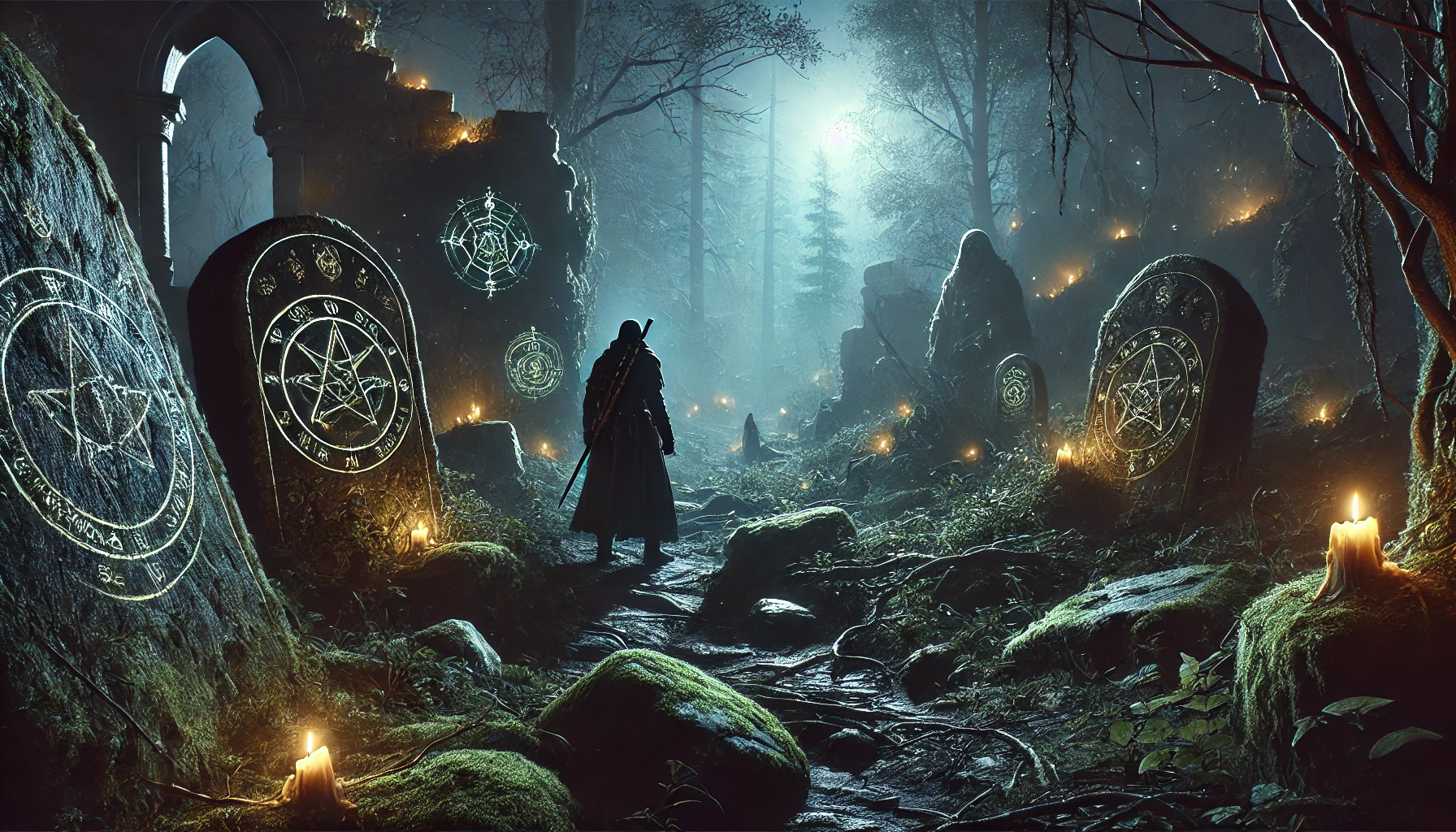Medieval X-Files Game from Witcher 3 Developers Has Me Intrigued
What two words would instantly get you excited about a game pitch? Some might say “indie roguelike” or “pixel art.” For me, it’s always been “Roman RPG.” But now, my gaming lexicon has expanded. A new title from former Witcher 3 developers, The Blood of Dawnwalker, has emerged, described as a “medieval X-Files.” The mere juxtaposition of “X-Files” and “medieval” has tickled my imagination in ways I never anticipated.
What Is The Blood of Dawnwalker?
Currently, details about Blood of Dawnwalker are sparse, but here’s what we know. Set in the 14th century, the game’s trailer unfolds in the Carpathian Mountains. It opens with a man fleeing a burning town, carrying his young sister wrapped in a blanket. As they escape, they are confronted by guards and mysterious shadows. The trailer showcases supernatural phenomena: a wisp of smoke evaporating a guard’s leg, a soldier pummeled by a ghost, and a Night King-like creature unleashing psychic attacks. A Nosferatu-esque figure feasts on the corpses, adding to the eerie atmosphere.
Strangely, these creatures seem to assist a plagued child, vowing vengeance on the world—or at least this small mountain valley. While the cinematic trailer looks visually impressive, CGI teasers can only generate so much excitement. The brief gameplay snippets shown lack revolutionary elements, although promises of more gameplay footage are expected this summer. The biomechanical boss looks grotesquely intriguing, and the combat appears fast-paced, but we need more to form a complete picture. Still, a compelling premise can often carry a game through its early stages of development.
What Would a Medieval X-Files Look Like?
During a recent Twitch stream unveiling Blood of Dawnwalker, game director Konrad Tomaszkiewicz and narrative director Jakub Szamalek discussed the studio’s commitment to independence and artistic freedom. Amid the marketing jargon, they referenced Fallout 2, emphasizing the lack of a central quest and the importance of player choice. This approach aims to create an old-school RPG experience bolstered by cutting-edge graphics.
A particularly captivating moment came from writer Ariana Siarkiewicz, who described a scenario where your character’s vampiric bloodlust could lead to unintended consequences. If you speak to someone before feeding, you might lose control and attack them—potentially your best friend or a quest-giver. This narrative flexibility hints at an open-ended gameplay structure that could lead to thrilling and unpredictable outcomes.
The game’s magic system is designed to evoke unease rather than traditional fantasy tropes. Instead of fireballs or lightning bolts, players might witness birds flying backward or the aurora borealis manifesting at ground level during the day. This blend of realism and the uncanny is what draws the X-Files comparisons from art director Bartlomiej Gawel.
“Our magic is serious and closer to paranormal phenomena than traditional spellcasting,” Gawel explains. This statement, though quickly overshadowed by environment artist Adam Payet discussing weather systems, is a game-changer. It’s a comparison that will likely resonate with many players and could significantly boost interest in the game.
The X-Files Influence
The X-Files stands out in science fiction due to its grounding in conspiracy and realism. The series poses the question of whether extraterrestrial life exists, presenting strange phenomena without relying on fantastical elements like rayguns or hover cars. Instead, it offers extraterrestrial explanations rooted in the believable.
The Blood of Dawnwalker aims to replicate this essence within a medieval context. This isn’t a fantastical realm like Middle-earth or The Continent; it’s a familiar world, now infused with vampires. This unique vision of the occult, balancing historical elements with fantasy, offers a fascinating premise. Reducing it to the phrase “X-Files in the Middle Ages” is enough to pique my interest.
Anticipation for Gameplay
As we await the gameplay trailer from Rebel Wolves later this year, one question lingers: if protagonist Coen serves as our Mulder, does that make Nosferatu his Scully? The dynamics between characters in a world filled with supernatural elements could lead to compelling storytelling and gameplay mechanics.
The studio’s commitment to artistic freedom and player choice suggests a game that prioritizes narrative depth and player agency. The potential for varied outcomes based on player decisions, especially with the vampiric bloodlust mechanic, adds layers of intrigue. Imagine encountering a pivotal character only to have your actions lead to their demise—an outcome that could drastically change the narrative landscape.
Conclusion
With its intriguing premise and the promise of a unique blend of historical realism and supernatural phenomena, The Blood of Dawnwalker has captured my attention. By channeling the spirit of The X-Files into a medieval setting, it offers a fresh take on the genre. The combination of player choice, narrative complexity, and eerie magic systems sets the stage for a potentially groundbreaking RPG.
As we gear up for more information and gameplay reveals, the anticipation continues to build. Will Blood of Dawnwalker deliver on its promise? Only time will tell, but for now, I’m firmly on board.

